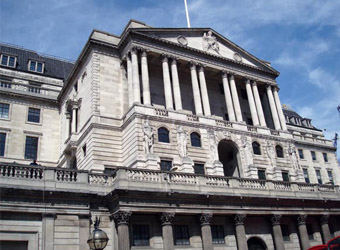Britain’s major banks would be able to withstand a “hard Brexit” scenario, according to the Bank of England’s (BOE) annual stress test of the U.K. financial system.
In the BOE’s latest report published Tuesday, the Bank found the U.K.’s seven-largest lenders would be able to continue lending even if Britain were to abruptly leave the European Union (EU) in 2019.
“Let’s be clear, this is a big call … Because wBritaie will be here in March 2019 in the unlikely event that we end up in a situation without a transition deal or without an agreement. So we are putting our money where our mouth is,” BOE Governor Mark Carney said in a press conference.
The test — the fourth annual assessment conducted by the BOE — found Britain’s major banks were all resilient to a scenario more severe than the global financial crisis.
Its latest health check on the banking sector simulates U.K. GDP (gross domestic product) crashing 4.7 percent, world GDP slipping 2.4 percent, unemployment soaring to 9.5 percent, house prices tumbling by a third and interest rates climbing to 4 percent.
It is designed to ensure U.K. based lenders have strong enough capital positions as well as sufficient liquidity to weather an economic collapse.
Descriptions vary on what a so-called “hard Brexit” is, but it’s generally considered to be the U.K. leaving the EU without access to its customs union or the single market — a tariff-free trading agreement. The BOE said that should Britain leave the bloc without a trade deal or a transitional implementation period, Britain’s banks would have enough capital to withstand “material” economic risks.
No bank needs to strengthen its capital position
For the first time since the central bank launched its stress tests in 2014, no bank needed to strengthen its capital position as a result of the economic conditions applied by the BOE.
Banks incurred losses of around £50 billion ($66.6 billion) in two years in the latest test. This would have “wiped out” the U.K. bank’s capital 10 years ago, the BOE said.
“The people of the U.K. can move forward with confidence that they can access the financial services they will need to seize the opportunities ahead,” Carney said.
Britain’s central bank also announced Tuesday it would ask U.K. lenders to hold an extra £6 billion in capital to guard against risks post-Brexit. The BOE said it would raise a special buffer half a percentage point, to 1 percent, in order to lock in capital that banks are currently holding voluntarily.
The hope is that banks would be better placed to endure against any potential macroeconomic ramifications beyond Brexit, the bank said. It also warned the buffer could rise again next year.
The Bank’s stress test is not designed to show what the central bank actually thinks will happen to British and world economies under extreme economic pressure, but rather to understand the total worst case scenario.
The seven banks tested were the Royal Bank of Scotland, HSBC, Barclays, Standard Chartered, Lloyds, Nationwide Building Society and the U.K. arm of Spanish bank Santander.
Exploratory scenario
Further to the ability to withstand economic shocks, banks were tested under exploratory conditions for the first time. This scenario tested lender’s resilience over seven years of tepid global growth, low-interest rates and high legal costs.
Last year, RBS, Barclays and Standard Chartered were found to have faults under the Bank’s testing conditions, with RBS forced to submit plans to the regulator explaining how it would raise capital in order to cope with any financial shocks.
In last week’s Autumn Budget, U.K. Finance Minister Philip Hammond said the Treasury wanted to sell off £15 billion of its stake in RBS. And while that would amount to approximately two-thirds of the lenders’ current value, it would leave U.K. taxpayers with a £26 billion loss.
Stress tests have gained in popularity since the global financial crisis a decade ago, when several lenders across the world either collapsed or were bailed out by governments. At the time, Britain moved to pump billions of pounds into both RBS and Lloyds to keep them afloat.



